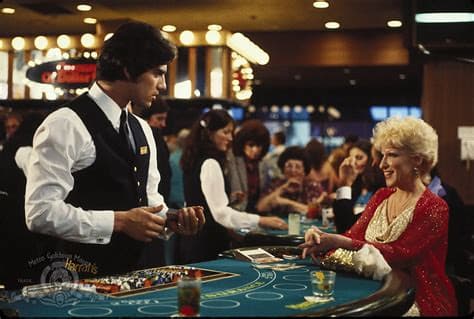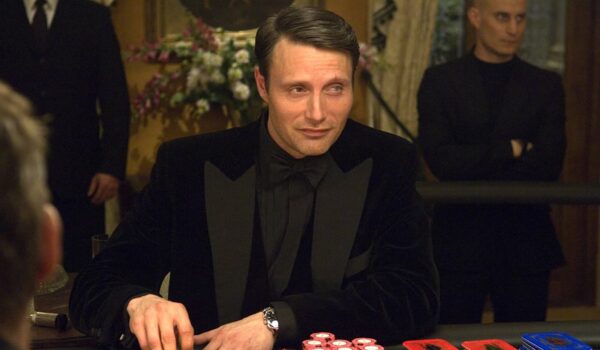When gambling is brought to movie screens, it comes to life, creating a world full of suspense, intrigue and drama. Through cards, dice and roulette, moviegoers open the door to complex human emotions and situations where every move can change fate. This theme continues to appeal to audiences and filmmakers alike because of its ability to bring to life profound lessons about risk, probability, and human character. In this article, we will dive into analyzing exactly how gambling is portrayed in movies and reveal what makes it such a magnetically appealing genre.
Gambling as a Symbol of Destiny: The Role of Gambling in the Cinematic Plot
In the world of cinema, gambling often acts not just as a means of entertainment or enrichment, but as a powerful symbolic element that reveals deep aspects of the characters’ fate and personality. These games can serve both as a mirror reflecting inner conflicts and life trials, and as a catalyst for events that determine the development of the plot.
In films, gambling – https://casinoudenrofus.info/udenlandske-casinoer/ often symbolizes a struggle with the characters’ inner demons. This may be a struggle for self-determination, control over one’s life, or overcoming inner fears. The gambling table becomes an arena where not only card games, but also people’s fates are played out.
Examples from cinematography:
- “Casino Royale” (2006): In this movie, the poker game between James Bond and his antagonist Le Chiffre becomes more than just a game. It symbolizes the struggle between good and evil, where each move on the card table reflects a more global tactic and strategy. Bond uses this game to defeat a terrorist while demonstrating his coolness, intelligence and ability to withstand pressure.
- “The Gambler” (1974): This movie tells the story of a literature professor for whom betting in gambling becomes a way of self-destruction and at the same time a means to self-discovery. His addiction to gambling is a manifestation of his inner conflicts and unresolved problems, which eventually leads him to rethink his own life and values.
Psychology of Gaming: Unlocking the inner world through gambling
Films covering the topic of gambling often delve into the psychology of their characters, using the gambling process as a powerful tool to explore and depict inner conflicts, motivations and weaknesses. In cinematography, the game becomes not only a dramaturgical tool, but also a way of psychological analysis, allowing the audience to see what is hidden behind the facade of the characters.
Basic psychological aspects of gambling in movies:
- Risk and reward
In movies where gambling plays a key role, the theme of risk is often addressed. Characters are forced to choose between potentially high rewards and the risk of losing everything. This reflects their internal struggle and willingness to make sacrifices to achieve a goal. An example is the movie “21” (2008), where young talented students under the guidance of a math professor take part in a complex card game, putting their future on the line.
- Control and destiny
On-screen gambling is often used to explore the illusion of control. Characters may believe they are in control of the game, which symbolizes their desire to control their own destiny in the face of uncertainty. The movie The Gambler (2014), where the protagonist, a literature professor, risks everything for the adrenaline of gambling, vividly illustrates this theme.
- Self-deception and self-discovery
Gambling in movies often shows how characters deceive themselves by ignoring obvious risks or overestimating their capabilities. This approach helps reveal their inner conflicts and flaws. For example, in the movie California Poker (1985), characters are drawn into the game, each with their own fears and hopes, leading to inevitable confrontations and personal growth.
Through gambling, filmmakers not only create tense and exciting scenes, but also deeply explore the psychology of their characters. Gambling becomes a way of showing how characters react to stress, what decisions they make under pressure, and how those decisions affect their future fate. This allows the audience to better understand and feel the characters while delving deeper into the dramatic aspects of the movie.
Aesthetics of Gambling: Visual and sound design of gambling scenes in movies
In movies, gambling scenes are not just action scenes, they are artworks where every design element is carefully considered to create the right atmosphere and mood. The visual and sound design of these scenes plays a key role in how the viewer perceives and experiences the events on the screen.

Visual elements
- Dark tones and sharp contrasts. Black, gray, and dark blue hues are often used to create a mysterious and tense atmosphere. In such a design, the contrasts between light and shadow heighten the drama of the moment, emphasizing the high stakes of the game. For example, in the movie “Island of the Damned” (2010), dark tones are used to create a sense of suspense and psychological pressure.
- The play of light and shadow. Using lighting to focus attention on certain objects or characters in the frame enhances the emotional impact. Dramatic side light can emphasize the intensity of a moment or a character’s inner state, as seen in the film Casino (1995).
Sound design
- Slow escalation of the music. Gambling scenes often use a gradual increase in the volume and intensity of the music, which increases the sense of tension and anticipation of the outcome of the game. An example is the movie “21” (2008), where the music builds up as the gambling session approaches the climax.
- Use of sound effects. The sounds of chips, rustling cards, roulette clicks – all these elements add realism and immerse the viewer in the casino atmosphere. Such sound design can be heard in movies such as “House of Cards” (2013), where the sounds of the game emphasize the process and its meaning for the characters.
The combination of visual and sound design plays a crucial role in creating the full emotional and psychological effect of gambling in movies. This combination helps to create complex, multifaceted scenes that stay in the audience’s memory and make movie productions not only spectacular but also deeply emotional.
Cultural Impact: Gambling as a Mirror of Society
Gambling movies reflect cultural and social changes by showing how society perceives gambling in different eras.
Changes in the perception of gambling
- 1920s: During this period, films often portrayed casinos as places of luxury and debauchery, emphasizing their appeal and association with high society. Examples include film noir such as The Big Sleep (1946).
- Modernity: Contemporary films tend to be more critical of gambling, focusing on addiction issues and social consequences. Examples include Martin Scorsese’s Casino (1995) and Master of the Game (2014).
The cultural significance of gambling in film
- Social reflection: Cinema uses gambling to comment on changes in the economy, legislation, and public sentiment.
- Exploration of human nature: Films explore deep human longings and fears through the lens of gambling.
- Social Criticism: Through gambling stories, films often express criticism of the social and economic shortcomings of society.
